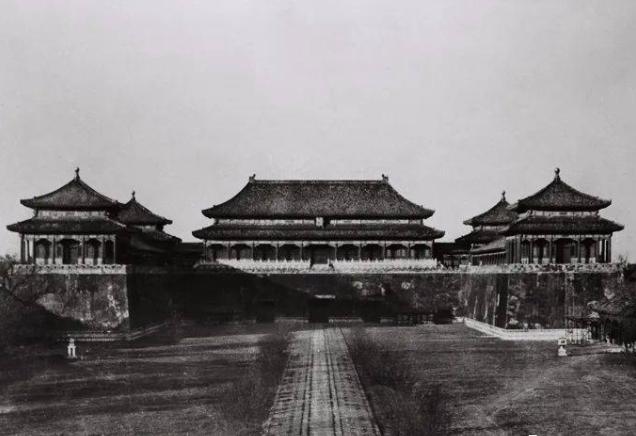
After the founding of the People's Republic of China, the Noon Gate City Tower belonged to the Beijing Museum of History (the National Museum of History of the Republic of China, renamed the Beiping History Museum of the Academia Sinica in 1929, and later changed its name several times. In October 1949, it was renamed Beijing History Museum and was owned by the Ministry of Culture of the Central People's Government.
On April 11, 1951, the Beijing Museum of History held an exhibition of Dunhuang cultural relics at the Noon Gate of the Forbidden City, exhibiting more than 900 facsimiles of Northern Wei, Western Wei, Sui, Tang, Five Dynasties, Song and Yuan murals, as well as facsimiles and statues of tombstones and statues of Yuan Dynasty painted paintings, which ended on May 15, 1951.
Since October 1, 1951, in order to celebrate the second anniversary of the founding of the People's Republic of China, the Cultural Relics Bureau of the Ministry of Culture of the Central People's Government has joined hands with the Beijing History Museum, the Department of Construction of Tsinghua University, the China Construction Society and other units to hold the "Great Exhibition of The Great Architecture of the Motherland" in the main hall of the noon gate of the Beijing History Museum.
In 1954, the "Exhibition of Cultural Relics Unearthed in the National Capital Construction" was exhibited in the exhibition hall of the Beijing History Museum on the noon gate, causing a sensation. On May 2 and May 22, 1954, Mao Zedong visited the exhibition twice. However, there are many anecdotes and legends about Mao Zedong's visit to the Forbidden City, but there are only two official records, and they are only on the noon gate.
In July 1959, a new building was built on the east side of Tiananmen Square, and in August 1960, the Beijing History Museum was officially renamed the China History Museum, and the new building was officially opened to the public in July 1961. The Noon Gate was later handed over to the Palace Museum as an old building. In 1963, the renovation of the main building of the Noon Gate was carried out.
In April 1984, U.S. President Ronald Reagan visited Beijing. Three months before the visit, the relevant person in charge of the Ministry of Foreign Affairs informed that he was ready to vacate the noon gate as a welcome venue.
A number of experts from the Palace Museum, the China History Museum, and the State Administration of Cultural Heritage expressed dissent at the time. A few days later, the relevant responsible person of the Ministry of Foreign Affairs further informed that the leading comrades had gone to see the noon gate, made a decision, and decided on the following matters:
First, replace the "Noon Gate" plaque on the upper floor of the Noon Gate with the national emblem, and install lighting facilities on the upper floor of the Noon Gate City;
Second, due to the unevenness of the square in front of the noon gate, the red carpet could not be paved, and it was required that the square be leveled by April 1984;
Third, some rooms next to the East and West Gates and the East and West Que Gates (referring to the Left Gate and the Right Gate) in front of the Noon Gate were transferred to the Ministry of Foreign Affairs as lounges;
Fourth, two permanent flagpoles were erected in the square in front of the noon gate.
The above four opinions have caused the cultural relics experts to oppose it all the time, pointing out that although the Noon Gate in the Ming and Qing dynasties was a place to hold grand festivals and receive foreign envoys, wherever the war was won and triumphantly returned, a captive sacrifice ceremony, that is, a "prisoner sacrifice ceremony", was also held on the noon gate tower, that is, a "great gift for offering prisoners", and each time it was extremely solemn, the texts have many records of this, if the welcome activity was held at the noon gate, it was bound to have the adverse impact of "insinuation", so it was really inappropriate for the noon gate as a welcome place.
Soon, the experts' opinions came into play and the decision was canceled by the authorities. The Noon gate was eventually preserved in its entirety.